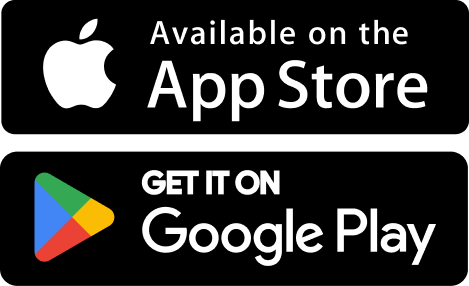Building a small business that makes $1,000 a month can be life-changing. It’s not complicated, and you don’t need special skills. You only need a solid plan, some effort, and commitment to follow the steps. Here’s how you can create a course to reach that $1,000 monthly goal.
Why a $1,000 Business Course Works
Creating an affordable business course is one of the best ways to generate steady income. Why? Because people are eager to learn from experts, try new ideas, and grow their skills. A $1,000 income isn’t just for big companies or tech-savvy people—it’s possible for anyone.
When you offer a course that solves real-world problems, people gladly pay for it. Think about it—many businesses start this way. They identify a problem and offer answers that are easy to understand, practical, and helpful.
Who Can Start a $1,000 Course?
Absolutely anyone. Are you good at cooking, fitness, writing, or marketing? Do you have experience in solving specific problems? Then you’re ready to teach others. Even if you’re not an expert, you can learn and share valuable insights.
Some examples include:
- Teach people how to create healthy meal plans.
- Offer courses on managing small budgets or saving money.
- Help beginners start their blog or YouTube channel.
- Show people how to exercise at home with simple tools.
Benefits of Starting This Journey
- Financial Stability: $1,000/month can help pay bills, avoid debt, and even allow savings.
- Self-Growth: Sharing your skills boosts confidence and shows how capable you are.
- Freedom: You can work on your course anywhere, anytime.
Now, let’s break it into simple steps.
Step 1. Choose Your Course Idea
Every successful course starts with a simple idea. Your idea must match something you’re good at and what people need. What problems can you solve? What advice do your friends ask for?
If you’re struggling to decide, try these methods:
- Ask Questions: Post on social media or ask friends what skills or lessons they want to learn. Example question ideas:
- “What’s one skill you always wanted to learn but couldn’t find time or resources for?”
- Check Online Forums: Places like Reddit or Quora are full of people asking for help. Go to sections about business, hobbies, or health to see what’s trending.
Example:
Imagine you enjoy baking. People in your area may want lessons on easy-to-bake treats. Instead of long, expensive cooking courses, you can offer a program focused on quick, tasty recipes.
Step 2. Validate Your Idea
Before you make the course, check if people will pay for it. This is called validation. Here’s how to test your idea:
- Create a Simple Post: Share your idea on social media. For example:
- “If I create a course on easy homemade bread recipes for $50, would you be interested?”
- Set Up a Waitlist: Use free tools like Google Forms to create a sign-up sheet. Add questions like their name, email, and why they’re interested.
- Sell Before You Build: Offer the course at a discount in advance. If two or three people pay, then you’re onto something. Build your course from there.
Step 3. Build the Course
Keep it simple. Your course doesn’t need to be fancy. Follow these steps to build strong content:
- Pick Specific Topics: Start with your skills. For example:
- If you’re teaching baking, your lessons could include “easy bread recipes,” “proper dough kneading,” and “baking without fancy equipment.”
- Structure Your Lessons: Think of your course like a book. Divide it into small “chapters” or modules. Include videos, worksheets, and text explanations.
Example:- Module 1: Picking the Right Ingredients
- Module 2: Preparing Dough in 15 Minutes
- Module 3: Baking Like a Pro
- Use Free Tools: Platforms like Teachable, Udemy, or even YouTube can help. Start small, and upgrade as your audience grows.
Step 4. Price to Sell
The goal is to make $1,000 a month. Pricing is key. If your course costs $50, you need 20 students to reach your goal. If you price it at $25, you need 40 students.
Tip: Offer limited-time discounts for early buyers. For example:
- Regular course price $50. Discounted price $30 for the first 10 people.
Step 5. Market Like a Boss
Now that your course is ready, marketing is the key to reaching your $1,000 goal. Here’s how:
- Use Social Media: Post short teaser videos, tips, and testimonials.
- Collaborate with Others: Partner up with other creators who share your audience.
- Offer Free Samples: Give sneak peeks or free lessons to build trust. Many people buy after experiencing value first.
Take the example of “Monthly1K,” a course by Noah Kagan. Its success came from community feedback, bold claims, and action steps. Noah didn’t wait for things to be perfect—he tested, marketed, and kept improving.
Step 6. Scale Your Business Course
Now that your course is live and bringing in students, it’s time to scale. Scaling means growing your course to earn more and reach more people without adding too much extra work.
How to Scale
Here are some simple ways to take your course to the next level:
- Create Bonus Content
Add extra resources or features to make your course even more appealing. For example:- Bonus “Q&A” session videos.
- Downloadable cheat sheets or templates.
- Checklists that simplify the lessons.
- Build a Community
Students love being part of a group where they can share ideas and ask for advice. Create a private Facebook or WhatsApp group for your students. You can:- Answer questions and keep engagement high.
- Share extra tips and success stories.
- Allow students to bond and encourage each other.
- Offer Package Deals
Bundling is a great way to increase sales. You can combine your current course with other materials or even upcoming content.- Example:
- Course + a 30-minute coaching call.
- Access to your next course at a discounted price.
- Example:
- Create Advanced Modules
Once your students complete your beginner course, what’s next? Offer an advanced version of your course for those who want to take their skills further.- Example:
- Basic Baking Course ($50) → Advanced Artisan Baking ($100).
- Example:
Real Example
Think of Noah Kagan’s “Monthly1K” course. By splitting his material into beginner, intermediate, and advanced modules, he made it easier for learners to stay for the long haul. The added benefit of a Facebook group helped students stay engaged. Scaling doesn’t need fancy tricks—just smart additions that match what your audience needs.
Step 7. Reach a Larger Audience
Scaling isn’t just about creating valuable content—it’s also about getting it in front of more people. Here’s what you can do:
1. Collaborate with Influencers
Partner with people who already have an audience that fits your topic. For example:
- Find YouTubers, podcasters, or bloggers in the same niche.
- Offer them free access to your course in exchange for a review or shout-out.
A single mention by an influencer can drive hundreds of new students to your course.
2. Use Paid Ads
You don’t need a big budget for effective ads. Start with small steps:
- Boost your posts on Facebook or Instagram.
- Run targeted ads for $5–$10 a day to see what works.
- Create an ad that highlights your course benefits and includes testimonials.
Ads help you reach people who might not otherwise discover your course.
3. Affiliate Marketing
Set up an affiliate program. This means rewarding people (affiliates) for promoting your course. For every sale they bring, they earn a percentage of the profit (e.g., 10–20%).
- Example:
- Fiverr uses affiliates to promote their services and pays commissions.
- Tools like Teachable have built-in affiliate programs to help you get started.
4. List Your Course on Different Platforms
If your course is only on one platform, you’re limiting your reach. Here are some other spaces where you can upload and sell your course:
- Udemy, Skillshare, or LinkedIn Learning.
- Your own website or blog.
- Email newsletters to your existing contact list.
Cast a wide net to attract students from different channels.
Step 8. Create Passive Income
Once your course gains traction, you can turn it into passive income. This means earning money without actively working every day. Here’s how:
Automate Your Course Delivery
Platforms like Teachable or Thinkific allow you to set up your course so students can join, learn, and complete everything without your constant involvement. You just need to check in occasionally to answer questions or make updates.
Evergreen Marketing
Create ads, blog posts, or videos that can run for months—or even years—with little effort. For example:
- A blog post about your niche with a link to your course.
- A YouTube video tutorial that ends with a call to join your program.
These drive traffic to your course without requiring daily updates.
Offer Subscriptions
Adding a subscription option can turn one-time buyers into recurring income.
- Example:
- Monthly payment of $10 for continuous access to extras like live Q&As, new lessons, or updated content.
Real Example of Passive Income
Noah Kagan used evergreen methods like his blog and newsletter to promote his course. He didn’t stop after the initial launch. By keeping his marketing automated, he continued earning from the same course years later.
Step 9. Stay Motivated
Building a course that earns $1,000 a month takes time and effort. It’s easy to feel discouraged, especially early on. Stay positive! Here are some tips to keep yourself energized:
- Celebrate small wins. Even one happy student is a success!
- Track your progress. Set small goals, like earning $100 in your first week.
- Learn continuously. Stay updated about your niche so your material stays fresh.
Remember, success isn’t about luck. It’s about persistence.

Advanced Marketing Tips
With your course gaining momentum, it’s time to harness advanced marketing tactics. These strategies can help scale your reach even further and keep students coming back.
1. Leverage Email Marketing
Email marketing is one of the most effective ways to keep in touch with potential and existing students. Here’s how to make it work:
- Create a Helpful Freebie: Offer a free guide or mini-lesson related to your course. For example, give away a “10-Step Checklist” as a downloadable PDF in exchange for email addresses.
- Send Regular Updates: Share tips, new blog posts, or relevant videos via email newsletters. This keeps your audience engaged and brings in repeat buyers.
- Use Email Sequences: Automate a series of emails that introduce your course, showcase testimonials, and offer limited-time discounts.
2. Focus on Video Content
Videos are an excellent way to catch attention and build trust. People love seeing instructors in action.
- Create “how-to” previews of your course content. Explain one simple concept to show off your teaching style.
- Go live on platforms like Instagram, YouTube, or Facebook. Answer questions and interact with your audience while subtly promoting your course.
Example:
If your course teaches digital marketing, create a short video showing “How to Design an Instagram Ad in 10 Minutes.” Add a call to action like, “Want to master all aspects of social media marketing? Join my full course!”
3. Write Guest Blogs or Appear on Podcasts
Collaborate with websites, blogs, or podcasts that focus on your niche. This exposes your course to a wider audience.
- Write guest articles offering actionable advice and include a link to your course.
- Offer to appear on podcasts to share your expertise and tell your story as a course creator.
Podcasts work especially well because they allow you to connect on a personal level. Share how creating your course changed your life and how it can help others too.
4. Run Webinars
Webinars are like virtual workshops. They deliver value for free while promoting your course at the end. Use tools like Zoom or WebinarJam and structure it like this:
- Teach something valuable (solve one big problem).
- Answer questions live to build trust.
- Show how taking your full course offers even more solutions.
Webinars give you a chance to connect with potential students and increase sales engagement.
5. Expand to Other Languages
Since your audience might only understand 50% of English, opening your course to multiple languages could expand your reach. Use tools like subtitles or voiceovers to translate your content.
Platforms such as Udemy often support multilingual courses, making it easy to test broader markets.
Handling Feedback
Feedback is a goldmine for improving your course. Here’s how to use it wisely:
1. Ask for Reviews
After students complete your course, encourage them to leave a review. Good reviews make your course more credible and attractive, especially on marketplaces like Udemy or Teachable.
2. Welcome Criticism
Not all feedback will be positive, and that’s okay. Use criticisms to identify gaps in your content and improve future iterations.
Example:
If students say “The lessons feel too fast,” consider slowing down the pace or including additional resources.
3. Analyze Trends
Pay attention to what students repeatedly ask for. If many request more practice quizzes or bonus modules, add them. This increases student satisfaction and encourages word-of-mouth marketing.
4. Engage With Your Audience
Be active in your course communities (Facebook groups or forums). Answering questions and sharing tips builds loyalty. Loyal students are more likely to recommend your course to friends.
Long-Term Growth Strategies
Building a $1,000/month business is just the beginning. To turn this into a sustainable income stream, think long-term.
1. Create a Course Ecosystem
Turn your single course into a thriving system of learning:
- Offer beginner, intermediate, and advanced courses in your topic.
- Create workshops, live events, or membership plans for continuous access.
Example:
Start with “Basics of Digital Marketing” and expand to “Advanced Facebook Ads” or “Google Ads Masterclass.”
The more options you provide, the easier it is to retain students and multiply your income.
2. Offer One-on-One Coaching
Some students prefer personalized help. Bundle your course with individual coaching sessions for extra income:
- Example:
- Course + 2 coaching sessions = $250.
3. Reuse Content in Creative Ways
Repurpose course content into smaller products like eBooks, cheat sheets, or consults. Sell these as separate items or bundle them to attract different types of learners.
4. Stay ahead of Trends
The business world grows fast, and so must you. Keep updating your course with fresh tips, examples, and tools to stay relevant.
- Example:
If your course covers Instagram marketing, keep pace with new features like Reels or Threads.
5. Data-Driven Decisions
Track your sales metrics, student drop-off rates, and conversions regularly. Use analytics tools to pinpoint what’s working and where you can improve. A data-driven approach guarantees steady growth.
6. Invest in Yourself
Keep learning about course creation, online marketing, and content delivery. Take courses, attend webinars, and watch videos to refine your skills.
Wrapping Up
Starting a $1,000/month business course may sound challenging, but by following these steps, it becomes simpler and achievable. Do you have an idea? Are you willing to work consistently? If yes, the sky’s the limit!
From choosing your topic to scaling it into passive income, everything is about taking action. The greatest mistake is waiting for the “perfect time.” Start small, make mistakes, learn, and grow.
Remember, your course isn’t just about earning money. It’s about creating value, helping others, and finding the freedom to live life on your terms.
Here’s to your success! 🚀
Related posts:
 A man’s mind, stretched by new ideas, may never return to its original dimensions.
A man’s mind, stretched by new ideas, may never return to its original dimensions.
 Khan Academy vs Coursera: Which Online Learning Platform is Right for You?
Khan Academy vs Coursera: Which Online Learning Platform is Right for You?
 Start where you are. Use what you have. Do what you can.
Start where you are. Use what you have. Do what you can.
 Education is the passport to the future, for tomorrow belongs to those who prepare for it today.
Education is the passport to the future, for tomorrow belongs to those who prepare for it today.






